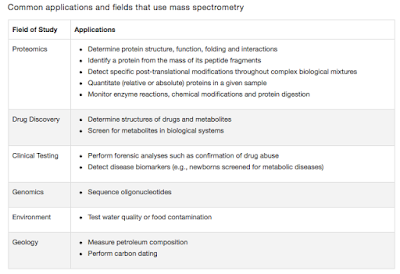Give me a new antibiotic buddy..
Prokaryotes mainly divide by binary fission. It’s a simple
elegant process where the organisms duplicates its genome, and makes two cells
from the parental cell. Unlike the higher cell division mechanisms, here the
only requisite is equal segregation of genome to daughter cells (Now I really don’t know
why daughter cells, why not son cells!!). The cell doesn’t care about rest of
the cellular components (If DNA is there it can make it all in prokaryotes).
(Image taken from http://www.emc.maricopa.edu/faculty/farabee/biobk/biobookmito.html)
One
of the important features of binary fission is formation of septum that leads
to formation of 2 cells from one. Wow!! Now here’s the story. At least in E
coli there are a minimum of 9 genes that regulate this process. ftsA, ftsI, ftsK, ftsL, ftsN, ftsQ, ftsW, ftsZ and zipA. FtsZ is one of the best characterized
among these. FtsZ has two
domains, a GTPase domain with a fold related to one found in the proteins p21ras and elongation
factor EF-Tu. It is believed that this protein is very important in
first steps of forming a septum. So, how about making this as target for
antibiotics? Target the GTPase activity and say hurray…
Sure, that’s a cool idea. The antibiotic would be novel, good activity as
the target is essential part of the cell. But will this be useful enough?
Assume that a compound X has successfully inhibited the process specifically.
The first thing that’s going to happen is the E coli divide but cant form 2
cells. After a few rounds the cell is going to mess up everything and then stop
the process or die, (either way the number of bacteria isn’t going up). What
about resistance? Well, as I see it the cell should undergo a natural selection
to become resistant. Am I right? But how will it, if the cell is not making new
ones. Bingo!!!! Bang on the target.
The only problem i see, which is possible is that cell gets mutated and
makes a new protein which isn’t affected by the drug as time goes (remember,
the cells haven’t replicated. Only the DNA has. But that doesn’t mean the cell
DNA cannot mutate). And then this new protein can now release the block that
can suddenly cause a burst in the cell division (Now not binary fission. It
should be some 500nary fission). Ofcourse, this is my speculation.
More research in
the area should say something and spread more light on this.
Further
reading
1. Jan
Löwe & Linda A. Amos. Crystal structure of the bacterial cell-division
protein FtsZ; Nature 391, 203-206 (8 January 1998)
2. Prerna N. Domadia, Anirban Bhunia, J. Sivaraman, Sanjay Swarup and Debjani Dasgupta. Berberine Targets Assembly of Escherichia coli Cell Division Protein FtsZ Biochemistry, 2008, 47 (10), pp
3225–3234.






Comments
Post a Comment